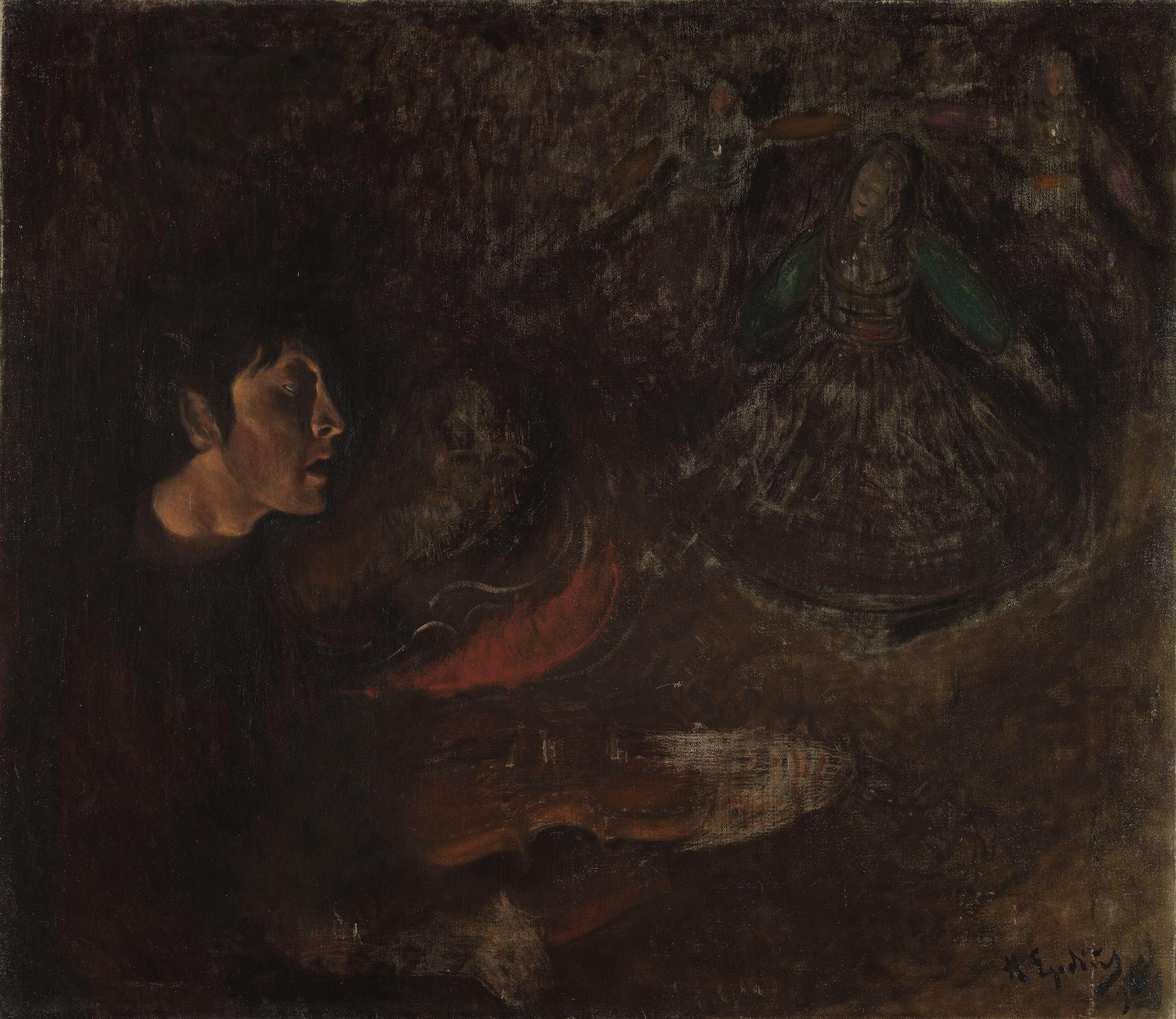Play and Dance
Halfdan Egedius
Transcription
Martin Horntveth:
When I look at this painting, I see a musician who’s completely immersed in his own reality, in his own world.
Narrator:
This is the drummer and music producer Martin Horntveth. He has spent thirty years on a quest for moods and feelings in music – in his band Jaga Jazzist, as a soloist, and as a film composer. Now he is standing in front of Halfdan Egedius’s painting Play and dance.
Halfdan Egedius was an exceptionally talented painter, who enrolled at art school when he was only nine years old. As a boy growing up in Drammen, a city 30km south of Oslo, he dreamed of a rural life. As a teenager, he spent a lot of time in the countryside in Telemark, where he became obsessed with folk dancing. He wanted to capture the particular atmosphere that could develop between musicians and dancers, and in the summer of 1896, he completed this painting, Play and dance. At that time, Halfdan Egedius was nineteen years old, and even though he would die of an infection just a couple of years later, he managed to become one of the most important Norwegian painters of his time.
Martin Horntveth believes that in Play and dance, Egedius succeeded in capturing the feeling of merging into music.
Martin Horntveth:
So yes, there’s nothing better for a musician than that sensation of both the musicians and the other people in the room being on the same wavelength and going into a kind of trance – a state that goes on and on, a feeling that we all just want to go on forever. That feeling is completely wild! Those moments when it occurs are magic. It’s like a kind of dream state, and very often when I’m performing, I’ll just really go for it; I’ll give everything and just be present in the moment. And so, I do very much recognise myself in this painting.